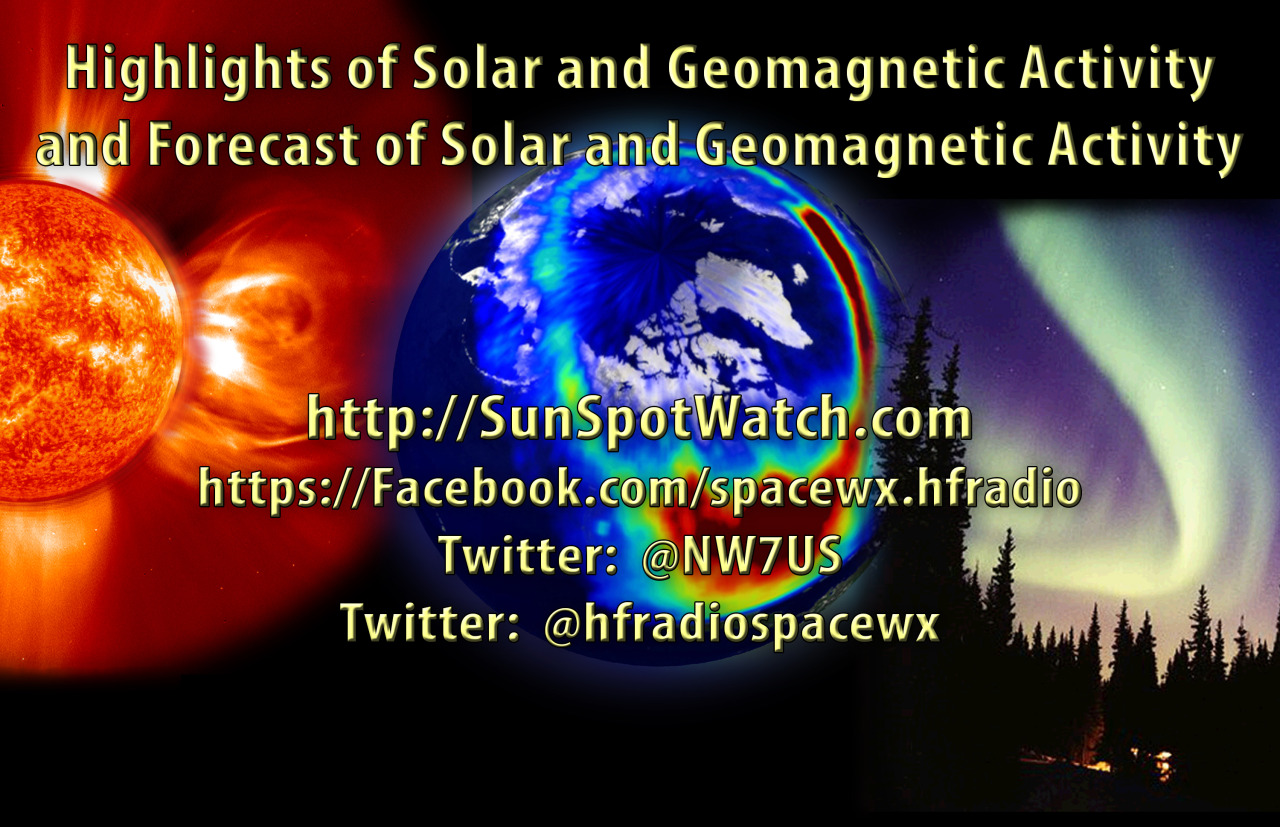 Weekly Propagation Summary – 2015 May 11 16:10 UTC
Weekly Propagation Summary – 2015 May 11 16:10 UTC
Here is this week’s space weather and geophysical report, issued 2015 May 11 0537 UTC.
Highlights of Solar and Geomagnetic Activity
04 – 10 May 2015
Solar activity ranged from low to high levels during the period. The
largest and most active regions on the solar disk this period were
Regions 2335 (S15, L=192, class/area Eac/310 on 04 May) and 2339
(N13, L=129, class/area Fkc/900 on 08 May). Region 2335 began the
period reaching its peak in area and magnetic complexity
(Beta-gamma). On 05 May it produced two M-class flares; an M1 at
05/1425 UTC and an M2 at 05/1724 UTC. By 06 May, Region 2335 was in
decay and ended the period as a simple Cro spot class with a beta
magnetic configuration. Region 2339 was in a growth phase since it
rotated around the NE limb on 05 May. This region was responsible
for multiple M-class flaring spanning 05-06 May and an impulsive X2
flare at 05/2211 UTC with an associated Type II radio sweep (1163
km/s), a 590 sfu Tenflare and a non-Earth directed coronal mass
ejection (CME) first observed in SOHO/LASCO C2 imagery at 05/2224
UTC off the NE limb. Solar activity declined to low levels from
07-10 May.
No proton events were observed at geosynchronous orbit.
The greater than 2 MeV electron flux at geosynchronous orbit was at
moderate levels on 04-05 May and at normal levels from 06-10 May.
Geomagnetic field activity ranged from quiet to minor storm levels
during the period. The period started off with quiet conditions on
04 and 05 May under a nominal solar wind regime. At 06/0053 UTC, a
shock was observed at the ACE satellite associated with a 02 May CME
that occurred as a result of an 18 degree filament eruption observed
between 02/1500-1830 UTC. Total field increased to a maximum of 18
nT at 06/0614 UTC while the Bz component went southward to a maximum
of -13 nT at 06/1216 UTC. Solar wind speeds increased from 363 km/s
to around 490 km/s. A geomagnetic sudden impulse was subsequently
observed at 06/0143 UTC with a 31 nT deviation in the Boulder
magnetometer. As a result, quiet to minor storm levels were observed
on 06 May. By late on 06 May and through 07 May, the Bz component
deflected north and remained so as CME effects diminished. Nominal
solar wind conditions prevailed through 10 May when the total field
became enhanced once again. Total field increased to 14 nT with
prolonged periods of southward Bz. No appreciable increase in solar
wind speed was observed with this event, however. The geomagnetic
field was quiet on 07 May, quiet to unsettled on 08 and 09 May and
quiet to active on 10 May.
Forecast of Solar and Geomagnetic Activity
11 May – 06 June 2015
Solar activity is expected to be at low levels with a chance for
M-class (R1-R2, Minor-Moderate) flares from 11-18 May as Region 2339
transits the visible disk and again from 31 May-06 June when Region
2339 returns.
No proton events are expected at geosynchronous orbit.
The greater than 2 MeV electron flux at geosynchronous orbit is
expected to be at normal to moderate levels with high levels
possible from 13-18 May and again from 21-23 May due to coronal hole
high speed stream (CH HSS) activity.
Geomagnetic field activity is expected to be at unsettled to active
levels from 11 through 14 May with periods of minor storming
(G1-Minor) likely on 12-13 May due to a combination of a co-rotating
interaction region followed by a CH HSS. Unsettled to active levels
are also expected from 18-19 May and 02 -03 June with possible
periods of minor storming on 18 May due to multiple recurrent CH
HSS.
Don’t forget to visit our live space weather and radio propagation web site, at: http://SunSpotWatch.com/
Live Aurora mapping is at http://aurora.sunspotwatch.com/
If you are on Twitter, please follow these two users:
+ https://Twitter.com/NW7US
+ https://Twitter.com/hfradiospacewx
Get the space weather and radio propagation self-study course, today. Visit http://nw7us.us/swc for the latest sale and for more information!
Check out the stunning view of our Sun in action, as seen during the last five years with the Solar Dynamics Observatory (SDO):
https://www.youtube.com/watch?v=zXN-MdoGM9g
We’re on Facebook: http://NW7US.us/swhfr













